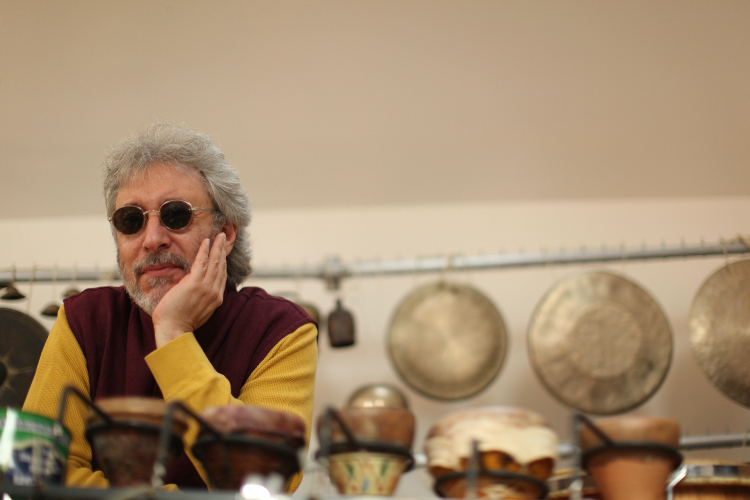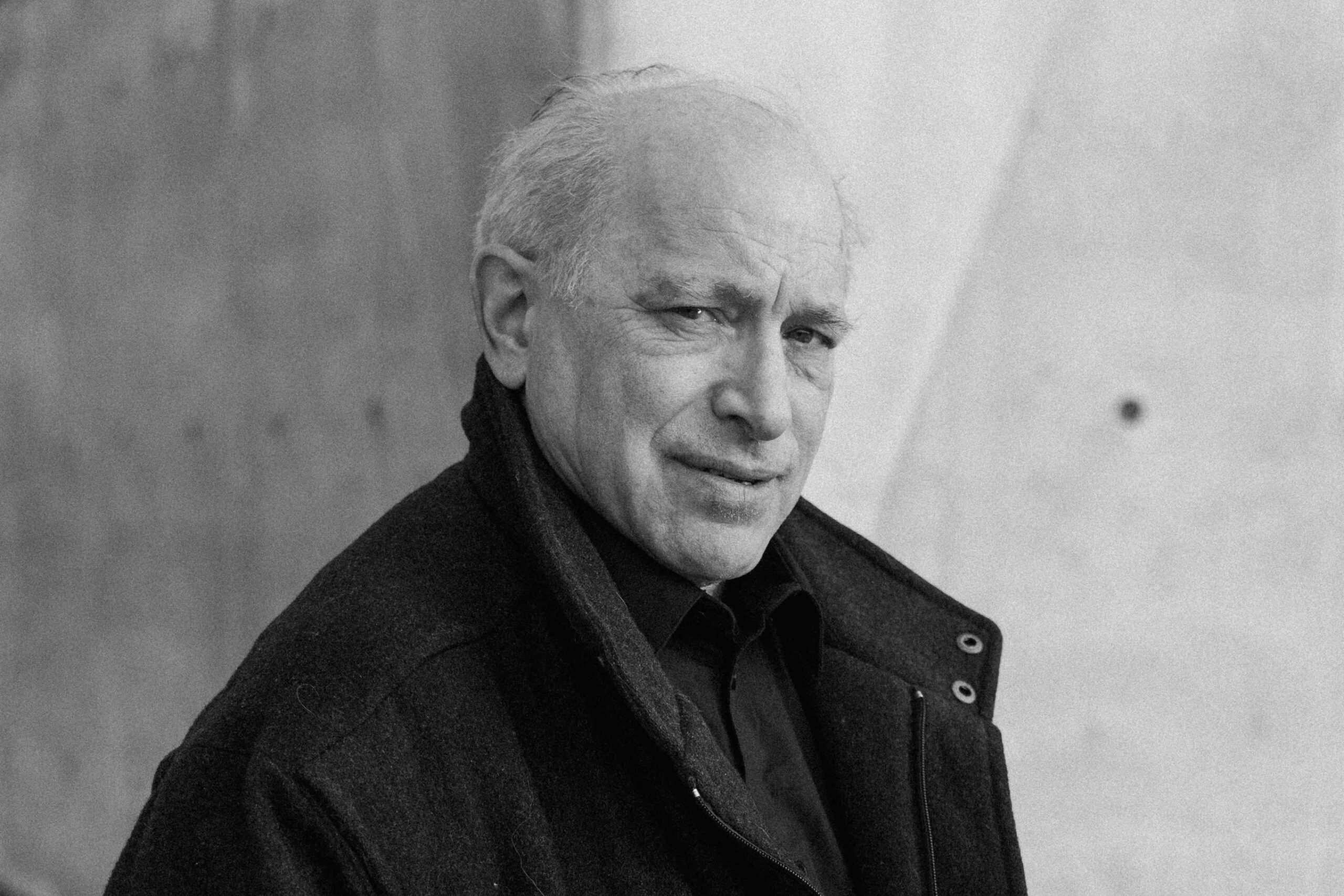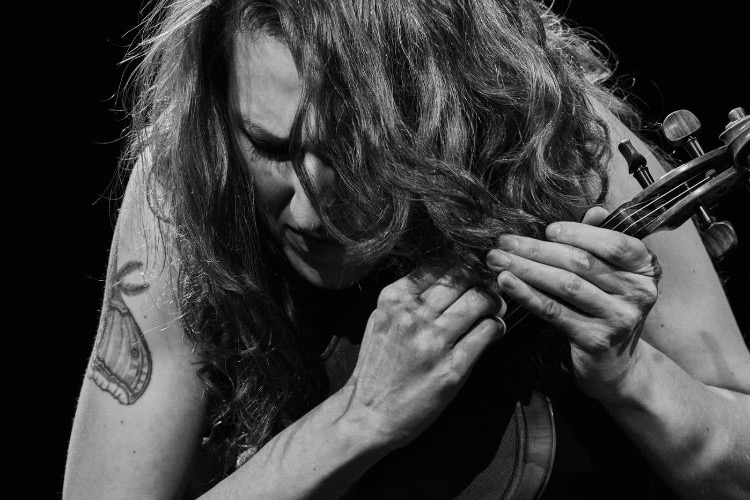Vibrational Miracle: A Conversation with Adam Rudolph (Part One)
|
Getting your Trinity Audio player ready...
|
Western musical notation dates back to at least the year 1025 when Benedictine monk Guido of Arezzo formed hexachords out of varied pitches. Over the following millennia, the system became more refined and ultimately developed into what one sees on most sheet music today. Given its long history, it is easy for many to assume that Western notation is the oldest or even the primary system for writing music. It is not. As early as 1400 BC, one can find Mesopotamian cuneiform tablets using a unique musical language. Moving East, one finds Chinese notation in the 6th or 7th Century AD. And some cultures, particularly in the Hindustani and various African traditions, rely primarily on things other than written text. Yet, even as the world continues to get smaller, an over-reliance remains placed on the Western system on music outside of various folk forms. How can an artist steeped in the tradition of American or European improvised music tap into additional cultural influences to further their craft? Enter Adam Rudolph’s Sonic Elements: Matrices, Cosmograms, and Ostinatos of Circularity (Meta, 2022).
One of the world’s top percussionists, Rudolph has spent almost his entire career diving into cultural musical precepts and seeing how they can intersect with Western improvised music. The New York Times has dubbed him a “pioneer in world music” and his CV supports that appellation. Living in Ghana in the late 70s, he met Gambian griot and koraist Foday Musa Suso. The two would later form the Mandingo Griot Society, the first band to meld traditional African music with jazz and R&B. Rudolph followed the experience by honing in on Gnawa music and working with its master, Hassan Hakmoun. Looking toward India, Rudolph studied tabla from one of Ravi Shankar’s first collaborators on the hand drum, Pandit Taranath Rao. Across a forty-plus year span, Rudolph has collaborated with artists from around the globe, including a long collaborative relationship with Yusef Lateef, a kindred spirit when it came to exploring cross-cultural musical ideas.
With Sonic Elements, Rudolph builds upon lessons learned over the years to provide a richer approach by which other artists can form musical structures. Though reliant on Western temperament, gone are the staves, clefs, and notes. So is the reliance on certain scales or modes. Instead, Sonic Elements presents ways for artists to think beyond these restrictions. It also includes various essays on topics including harmony, dreams, and imagination.
In the first part of our conversation with Rudolph, we provide a backdrop to Sonic Elements by discussing some moments during his life in music and his thoughts on the creative process. We also cover his new recording with Bennie Maupin, Symphonic Tone Poem for Brother Yusef (Strut, 2022). A bold and powerful statement on artistic risk-taking and experimentalism, Symphonic Tone Poem sends a message to listeners that even when addressing an artist as significant as Yusef Lateef, it is the essence of their output that matters far more than specific notes or sounds. In the second part of our conversation with Rudolph, we dive deep into Sonic Elements, and how it can benefit both musicians and non-musicians.
PostGenre: Going back, what first got you interested in what some people would dub “world music”?
Adam Rudolph: That’s a good question, although I wouldn’t frame it that way. I don’t really agree with or use the term “world music” because it implies the musician is applying some exotic other to their work. We all live in the world, and it is disingenuous to imply that some music is more exotic than others. To me, combining different musical influences has more to do with an artist’s attitude and curiosity. I like the idea of studying and learning about every kind of music. My intuition, as far back as when I was a teenager, was that if I could continue to use different ideas creatively, I could make interesting music. Fifty years later, I still feel like that is a good approach.
PG: Speaking of your time as a teenager, you grew up in Chicago and those teen years would have been in the late 1960s and 1970s. During the 1970s, the AACM became a huge creative force in Chicago. You have also worked with a few AACM artists over the years. Did the AACM shape your approach or thoughts on music?
AR: My music was shaped more by the general musical environment of the Southside of Chicago. I first heard the Art Ensemble of Chicago when I was fourteen or fifteen years old. The Art Ensemble’s music was mind-blowing. As a group, they showed the potential for what someone could do in music. If you kept an open mind and a strong creative imagination, persevere, and are studious, you can do anything musically.
At the same time, the environment I lived in was one where Howlin’ Wolf and Muddy Waters lived nearby. I heard them most Sunday afternoons. They showed how what we call virtuosity can exist completely in tune and in service of that spiritual feeling you’re trying to project through music. My actual mentors were the saxophonists Malawi Nurdurdin and Fred Anderson. I started playing with them when I was sixteen. It was not until many years later that I performed with artists like Muhal Richard Abrams and Wadada Leo Smith.
PG: For your undergraduate studies, you crafted your own major in ethnomusicology at Oberlin. It seems people over the decades have become more open to taking ideas from other cultures into their music.
AR: Well, when I went to Oberlin, I already had a pretty good sense of what I wanted to do and the creative direction in which I was being pulled. I tried to make my academic experience as relevant to what I was interested in as a young artist as possible. At that time, ethnomusicology was a field of study, but it had never been offered at an undergraduate level, only at the graduate level. So, I created my own major and called it ethnomusicology. But it was basically everything significant to me as an artist. I ended up taking many religion and philosophy courses as part of the major, along with the music courses.
PG: It seems ethnomusicology is a little more common as a field of study now than back in the 1970s. Is the wider acceptance due to the rise of the internet?
AR: Well, the internet, of course, makes many things more readily available. But at the same time, the internet also brings problems. Anyone can hear music from anywhere in the world on Youtube. But how does a listener separate the wheat from the chaff? Quantity does not necessarily equate to quality.
Another problem is that the ready availability of music, in a way, cheapens it. In the 1970s, it was very challenging to find teachers in Afro-Cuban drumming or djembe. Unlike now, you had to go through some hoops and make real efforts to find out about these types of music or play them. Travel and communication were also much more difficult. In 1977, I went to Ghana. Communication between there and the United States was by airmail letters, and it would take weeks before I would hear back from people. Now, everything is much easier, but there is also an attitude that the simplicity has made things feel cheaper and not as valued.
PG: So you went to Ghana immediately after college?
AR: No, when I finished at Oberlin, I went back to Chicago. I was also going to Detroit frequently to perform with Charles Moore and Kenny Cox. At the time, I drove a cab and stayed with my parents until I saved up enough money to go to Ghana.
PG: What led you to Ghana?
AR: A great percussionist, Julius Santos, told me about a program in Ghana called the Institute of African Studies. I went down to Ghana to try to set up something more official for the program. I was there for about a year, and it was a profoundly transformative experience in many ways.
PG: And the Mandingo Griot Society came out of your time in Ghana.
AR: Yes. I met Foday Musa Suso in Ghana. We were both living in the same compound when I was there and we became good friends. Actually, I planned to stay in Africa longer than I did, but we started forming the band and went to Chicago to run with it.
PG: How did you start working with Yusef Lateef?
AR: During the early 80s, Charles Moore, Ralph Jones, Frederico Ramos, and myself started a band that we called Eternal Wind. The group was very forward-thinking and recorded several records. At the time, Yusef had just returned to the US after living in Nigeria for four years. He wasn’t looking to start a band again but wanted to make new music. I don’t recall exactly how Yusef had heard our music, but he asked if Eternal Wind would collaborate with him. We started working with him, and I ended up working with Yusef for twenty-five years on many different projects, from large ensembles to duets. We did over twenty recordings together and toured the world.
PG: What do you feel you learned the most from working with Yusef?
AR: Yusef was like a father figure to me. I learned so much from him about not only music but also about developing one’s humanity and spirituality.
PG: Which ties into his concept of autophysiopsychic music. Would you mind elaborating a little on the concept?
AR: Well, autophysiopsychic was the term Yusef chose to describe his music. He was never comfortable with the term “jazz,” and I’m not really either. At its core, autophysiopsychic music means music that comes from the spiritual and physical worlds. I’m certainly down with that idea. To me, [the concept] references a yogic-like idea of body, mind, and spirit. Or, as I call it in the book Sonic Elements, “organic music.”
[The idea] acknowledges that what’s important about music, to me anyway, is not what style you use, what is hip at the time, or the transactional side of music. Today, we live in a society where music has been peripheralized. Music is thought about in an almost entirely transactional and objectified way. As a society, we focus on the buying and selling of music. We treat music as something to consume or that fits your lifestyle. Music is something that we take for granted.
But, in reality, music is as old as human activity. We have had it in one form or another for thousands of years. Music is inextricably woven into the development of human consciousness itself. It relates to the spiritual side of human beings. By spirituality, I’m not speaking of religion. We are born spiritual and later learn religion. I’m also not talking about anything magical. Instead, I am referring to the fundamentals of what makes something special: wonderment, inspiration, awe, and the feeling of transcendence. You can feel those things by all sorts of things, including being in nature, making love, and listening to or making music. Music is something we can’t touch but it touches us. There’s something about the vibrational sphere that is so mysterious, profound, and fundamental. I strongly recommend a return to our society viewing music that way, instead of emphasizing the transactional quality of music. The whole idea of the transactional quality of music that our society is so enamored with is limited and limiting.
PG: Do you see genre as part of the emphasis on the transactional quality of music? The page on “Organic Music” in Sonic Elements seems to suggest that to be the case.
AR: That’s exactly right. We live in a society that prioritizes buying and selling. Music is one of the ways, of many, that takes you into a place where you can transcend that quality and become more human. Music is ultimately there for us to be more in touch with the sense of being alive in the first place. To me, it is a miracle that you can use your voice, your hands on a string or drum, or your mouth on a horn to send vibrations out into the air that can be imbued with a human feeling. Actually, often you can express deep emotions in music in a way that you cannot capture in words. With your vibrations, you can make someone else cry, get goosebumps, or dance. I mean, that’s a miracle right there.
PG: And that seems true regardless of whether the instrument is acoustic, electric, or electronic. You have worked with Jon Hassell, who used electronics. And your group, Hu Vibrational, uses samples as well.
AR: Well, the samples for Hu Vibrational are of myself. I don’t go out into the world to seek samples. I’ve always made them myself. I have no problem with using electronics. At some point, some artists pulled vines down from a tree, attached them to the ground, and plucked them. That was high-tech once. Over time, we went from these vines to the piano. And, in my lifetime, we increasingly adopted electronic instruments. I think people should focus less on the differences between acoustic and electronic music and instead marvel at the miracle of how people from all around the world have invented millions of kinds of different musical instruments to satisfy their creative urges. That is one of the things that fascinates me about music from different cultures; how did those who first made that music decide what instruments they liked? How did they invent those instruments and decide that they were the tools to satisfy their creative urge? It’s amazing when you look at the range of instruments in the world.
At the same time, these different cultures fit together better than some people may believe. Last night we had a concert with my Go: Organic Orchestra and many guests. We had musicians from twelve different countries playing together with the orchestra. It’s important for us all to try to move beyond the dogmas of ways of putting music together and to move more towards a way that all of us can create music together while honoring our roots. We create a new context and environment where our language and voice can shine in a fresh and new way.
PG: This, in a way, circles back to Yusef Lateef’s music, as he often explored some shared space between “jazz” and “Eastern” music. One of your recent albums was a duet recording with Bennie Maupin dedicated to Lateef, Symphonic Tone Poem for Brother Yusef (Strut, 2022). It is a stunning work. How did it come together?
AR: Well, I’ve known Bennie Maupin since the late 1970s. Of course, I knew about him before that, but I started working with him around that time after I moved to Los Angeles. And, later, Bennie played with my Go: Organic Orchestra as an elder statesman of sorts. It was really beautiful for him to join us as the idea of the Go: Organic Orchestra was for older musicians to share with younger ones and teach them.
Yusef would have turned a hundred in the year 2020. Bennie is from Detroit and saw Yusef as a mentor and inspiration. The Angel City Jazz Festival ultimately invited Bennie and me to do a duet concert to celebrate Yusef’s hundredth birthday. Of course, the pandemic made the performance impossible as it became unfeasible for me to fly to Los Angeles. So, I proposed to the festival that they instead use the flight budget to commission me to write some electro-acoustic music and recorded it in my home studio. Ultimately, we did a virtual festival for which I created some music, and Bennie played along with the track I had created at home. After the performance, the festival sent what Bennie had recorded back to me. I did a lot of electronic processing on the track, and the final thing became Symphonic Tone Poem.
PG: What is fascinating about Symphonic Tone Poem is that it captures the creativity of the music that Lateef emphasized throughout his career but sounds nothing like any of his works.
AR: Yes. Even though Symphonic Tone Poem doesn’t sound like Yusef’s music, I felt like it was a good tribute. The best way to honor him was not to try and recreate anything he did or play his music but to honor the spirit in which he approached things. Yusef always said that with every record, he tried to do something he had never done before. I’ve always tried to do that as well. Symphonic Tone Poem honors the spirit of that creativity.
Click here for the second part of our conversation with Rudolph where we dive into his creative process and his new book, Sonic Elements: Matrices, Cosmograms, and Ostinatos of Circularity.
Sonic Elements is now available for purchase on Bandcamp. Symphonic Tone Poem for Brother Yusef is now available on Strut Records. More information on Rudolph can be found on the website for his label, Meta Records.
Photo credit: Ozier Muhammed




One thought on “Vibrational Miracle: A Conversation with Adam Rudolph (Part One)”